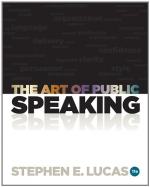(b) The auditory image is probably the next most vivid of our recalled experiences. Here association is potent to suggest similarities. Close out all the world beside and listen to the peculiar wood-against-wood sound of the sharp thunder among rocky mountains—the crash of ball against ten-pins may suggest it. Or image (the word is imperfect, for it seems to suggest only the eye) the sound of tearing ropes when some precious weight hangs in danger. Or recall the bay of a hound almost upon you in pursuit—choose your own sound, and see how pleasantly or terribly real it becomes when imaged in your brain.
(c) The motor image is a close competitor with the auditory for second place. Have you ever awakened in the night, every muscle taut and striving, to feel your self straining against the opposing football line that held like a stone-wall—or as firmly as the headboard of your bed? Or voluntarily recall the movement of the boat when you cried inwardly, “It’s all up with me!” The perilous lurch of a train, the sudden sinking of an elevator, or the unexpected toppling of a rocking-chair may serve as further experiments.
(d) The gustatory image is common enough, as the idea of eating lemons will testify. Sometimes the pleasurable recollection of a delightful dinner will cause the mouth to water years afterward, or the “image” of particularly atrocious medicine will wrinkle the nose long after it made one day in boyhood wretched.
(e) The olfactory image is even more delicate. Some there are who are affected to illness by the memory of certain odors, while others experience the most delectable sensations by the rise of pleasing olfactory images.
(f) The tactile image, to name no others, is well nigh as potent. Do you shudder at the thought of velvet rubbed by short-nailed finger tips? Or were you ever “burned” by touching an ice-cold stove? Or, happier memory, can you still feel the touch of a well-loved absent hand?
Be it remembered that few of these images are present in our minds except in combination—the sight and sound of the crashing avalanche are one; so are the flash and report of the huntman’s gun that came so near “doing for us.”
Thus, imaging—especially conscious reproductive imagination—will become a valuable part of our mental processes in proportion as we direct and control it.
2. Productive Imagination
All of the foregoing examples, and doubtless also many of the experiments you yourself may originate, are merely reproductive. Pleasurable or horrific as these may be, they are far less important than the images evoked by the productive imagination—though that does not infer a separate faculty.
Recall, again for experiment, some scene whose beginning you once saw enacted on a street corner but passed by before the denouement was ready to be disclosed. Recall it all—that far the image is reproductive. But what followed? Let your fantasy roam at pleasure—the succeeding scenes are productive, for you have more or less consciously invented the unreal on the basis of the real.




